Angela Ackerman's Blog: Writers Helping Writers, page 30
November 6, 2023
How to Create a Protagonist with True Depth

Some characters are so dynamic, we feel immediately close to them. Everything they say, do, and think is consistent with who they are, they have a past and present, and as we share their experiences, we never have to guess at what they feel, want, or need.
This authenticity happens when the author does the deep work to understand the character inside and out. And, I’m betting they did something else, too: created a reference file about the character, a.k.a., a Character Bible. This is a great way to avoid unintentional inconsistencies and mistakes.
And mistakes do happen, because we forget things ���Does Emma fear lizards or birds?���or we change our mind mid-book, and the love interest, Liam, goes from being a skateboarder to the king of parkour. Oh, and name changes? Don’t even get me started!
The point is that nothing pulls readers out of the story faster than when details shift, so implementing a way to keep each character straight in our minds is key.
The Character Bible: A Writer’s Best FriendA character bible document will contain important details about a character, everything from their appearance, personality, and preferences to their backstory wounds, goals, needs, and secrets. It has a trio of benefits:
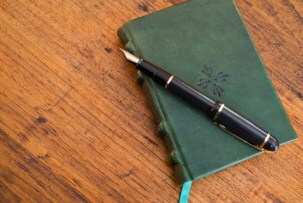 It pushes you to explore a character’s inner layers to figure out who they really are and what’s driving them in the storyOnce complete, the bible serves as a reference tool for you to ensure everything about the character is consistentWriting is easier because how the character thinks, acts, and behaves will be second nature to you.
It pushes you to explore a character’s inner layers to figure out who they really are and what’s driving them in the storyOnce complete, the bible serves as a reference tool for you to ensure everything about the character is consistentWriting is easier because how the character thinks, acts, and behaves will be second nature to you.How detailed your bible is depends on how important the character is. Some things you may wish to capture:
AppearanceWhat does your character look like? Do they have any interesting features that act as clues to readers as to the type of person they are? For example, hair: is their go-to a messy bun, is it chronically unwashed, or is every curl carefully tamed? Or do their clothes suggest a style preference or level of wealth? Do they have scars, marks, or defects that hint at an experience or trauma? Chosen well, specific details do a lot more than just help readers imagine what they look like.
BackstoryYour character’s past affects the present, in good ways and bad. So, who has influenced them to date, either supporting them or limiting them? What personal challenges have they worked through? What negative experiences (emotional wounds) are unresolved, leaving behind fear, biases, and false beliefs about themselves and the world?
Answering these questions will give you a good sense of what their past was like, and the most likely things they will carry forward, like emotional baggage, a sense of duty, a compulsion to fix people, etc.
Personality TraitsEvery character will have a unique personality made of positive traits (strengths & identity markers) and negative traits (flaws that keep people and situations at a distance so the character can avoid being hurt by them). Think about both halves ��� this character���s defining positive qualities, and those that create friction with others.
Moral & Spiritual Beliefs
All characters, even the baddies, will have a moral code. Do you know what beliefs your character hold to so strongly they make decisions and are willing to sacrifice other things to stay true to them? Where is their line in the sand, and what ideas are important enough to them to protect?
Emotional Range & BehaviorsEach person expresses themselves in their own way, and characters will too. Think about your character’s individuality – are they open and communicative about feelings, or keep them inside? Are they demonstrative, or more reserved, extroverted or introverted, or somewhere in the middle? What are their quirks and comfort zones? Understanding a character���s typical emotional range helps you choose emotional responses that feel authentic.
Fears and MisbeliefsEvery character has fears that result from negative experiences, because that dark seed is planted that the same sort of hurt could happen again. So, what fear is making your character a prisioner in some way, shaping their view of the world, themselves, and holding them back from being truly happy? Do they believe they are unworthy or incapable because of this fear, and this destructive lie is one they must cast aside to achieve their story goal?
Talents, Skills, and AbilitiesA character should have a few things they are good at, or an ability that make them unique. Giving your character a talent or skill that aids them when it comes to their goal (even in an unexpected way!) will create a sense of synchronicity for readers.
Likes and DislikesWhat are some of your character���s preferences���and why? Will these preferences steer their behavior in the story in good ways and bad? (Yes, the answer is yes.)
 Hobbies, Interests, and Passions
Hobbies, Interests, and PassionsWhat does your character enjoy doing? For a character to be realistic, they should have a few personal interests that make life more enjoyable. These may not even tie into the bigger story, but they do humanize your character to readers.
Current SituationJust like a character has a past, they have a present, too. Note a few details about where they live, what their family situation is like, what job they do, the vehicle they use to get around, and any routines or habits that might show up in the story. Knowing your character’s life better will give you ideas on how you can poke their soft spots (people and places they are attached to) and choose conflict that will come with personal stakes attached.
What They Want Most
Every character wants something ��� a goal that will make their situation better and leave them happier or more complete. This is what your character is striving to do or achieve in your story.
This goal should be something tangible or quantifiable, so readers know the character has done what they set out to do.
What They NeedSometimes what your character wants and what they need are a bit different. Maybe your character wants a new girlfriend to get past the pain of their latest breakup, but what they need is time to love themselves better and understand why they keep choosing toxic partners. Thinking about what makes them feel incomplete and why can set them on the path of a goal that will help them grow and make them feel more complete.
SecretsEvery character has a secret (maybe more than a few!) so think about what they hide from others. Is there something that could create big problems for them if it was revealed, or does it tie into their unresolved emotional wound? (Readers love secrets, and a hint of one will keep them flipping pages.)
WorldviewHow do they view the world ��� do they believe most people are good, or untrustworthy? Do they put others first, or look out for number one? Do they have biases, avoid certain places and experiences because they have preconceived ideas about what will happen, or refuse to listen to certain opinions that go against their own? If so, try to understand how this might tie to their backstory experiences.
Insecurities & SensitivitiesLife is not always gentle, and experiences where your character���s ego was bruised, or their emotions upended may have left them feeling insecure or easily triggered. If there are emotions your character tries to avoid feeling, or situations they stay away from because they make them feel weak, inept, or emotionally volatile, make a note. These are pointing to past pain, and you might wish to use them in the story to push them to become more self-aware so they can start a journey to healing.
This may seem like a lot to know about someone, but think of how easy it will be to write this character’s thoughts, decisions, and actions. And by writing when you down these details, you’ll have a character bible to reference when you need it!
A Tool that Creates a Character Bible for You
It takes time to uncover a character’s inner layers, we know, so we built a tool to help with that: the Character Builder at One Stop for Writers. Using psychology, it asks you the question you need to know about a character and collects the details into a profile that can be saved to your computer or transferred into certain software programs like Scrivener.
The Character Builder makes brainstorming characters faster and easier because it pulls characterization options from a giant database and shows you how choosing one detail about a character (like their job, or a personality trait) can help you brainstorm other details that naturally connect to that first detail. For example, if you decide your character is a teacher, the Character builder will show you a list of positive traits and skills that a teacher will likely have. With a click, you can add these traits or skills to the profile.
One Stop for Writers’ Character Builder will help you plan your character’s backstory, behavior, skills, goals, personality, fears, and everything else you need to know about them.

This profile is easy to update if you want to tweak something about them, and you can even clone the character profile and adapt a second one if you are thinking about this character and how they change in a series, keeping core details in place like their backstory and personality, but changing their goal, motivation, and perhaps an unresolved wound of set of fears that will play a big part in this new book.
Here’s a Character Bible I created so you can get a feel for what all the Character Builder can help you brainstorm. If you’d like to try the tool for yourself, just start a free trial. Happy creating!
The post How to Create a Protagonist with True Depth appeared first on WRITERS HELPING WRITERS��.
November 4, 2023
Character Type & Trope Thesaurus: Bad Boy
In 1959, Carl Jung first popularized the idea of archetypes���”universal images that have existed since the remotest times.” He posited that every person is a blend of these 12 basic personalities. Ever since then, authors have been applying this idea to fictional characters, combining the different archetypes to come up with interesting new versions. The result is a sizable pool of character tropes that we see from one story to another.
Archetypes and tropes are popular storytelling elements because of their familiarity. Upon seeing them, readers know immediately who they’re dealing with and what role the nerd, dark lord, femme fatale, or monster hunter will play. As authors, we need to recognize the commonalities for each trope so we can write them in a recognizable way and create a rudimentary sketch for any character we want to create.
But when it comes to characters, no one wants just a sketch; we want a vibrant and striking cast full of color, depth, and contrast. Diving deeper into character creation is especially important when starting with tropes because the blessing of their familiarity is also a curse; without differentiation, the characters begin to look the same from story to story.
But no more. The Character Type and Trope Thesaurus allows you to outline the foundational elements of each trope while also exploring how to individualize them. In this way, you’ll be able to use historically tried-and-true character types to create a cast for your story that is anything but traditional.
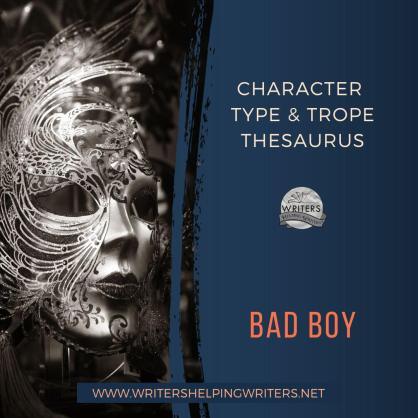
DESCRIPTION: This rebel sub-type is a loner with a devil-may-care attitude. His confidence, charisma, and disregard for authority only add to the attraction of his physical appeal, which is usually significant.
FICTIONAL EXAMPLES: Dally Winston (The Outsiders), Jay Gatsby (The Great Gatsby), Heathcliff (Wuthering Heights), Han Solo (Star Wars series), Spike (Buffy the Vampire Slayer)
COMMON STRENGTHS: Adventurous, Bold, Charming, Independent, Observant, Pensive, Persuasive, Resourceful, Sensual, Spontaneous, Spunky, Uninhibited
COMMON WEAKNESSES: Abrasive, Addictive, Antisocial, Apathetic, Callous, Cocky, Confrontational, Cynical, Devious, Disloyal, Disrespectful, Evasive, Impatient, Impulsive, Insecure, Irresponsible, Lazy, Macho, Rebellious, Reckless, Rowdy, Self-Destructive, Selfish, Stubborn, Uncooperative, Volatile, Withdrawn
ASSOCIATED ACTIONS, BEHAVIORS, AND TENDENCIES
Appearing confident
Defying rules and authority
Knowing their own mind
Seeking out excitement and adrenaline rushes
Preferring to create their own destiny
Wearing clothing (often dark or black) that sets them apart
Always having a witty comeback
Struggling with emotional intimacy
Saying things just to rock the boat
Dismissing others’ opinions or experiences as invalid
SITUATIONS THAT WILL CHALLENGE THEM
Falling in love with someone and needing to be vulnerable in the relationship
Encountering someone with an even bigger persona than they have
Not being able to attain the object of their affection
TWIST THIS TROPE WITH A CHARACTER WHO���
Is in charge of a business or other corporate venture
Works for a charity that protects others
Has an atypical trait: nervous, nurturing, diplomatic, sophisticated, etc.
CLICH��S TO BE AWARE OF
The vintage “cool guy” who dresses in black leather, smokes cigarettes, and rides a motorcycle
The vampire as a bad boy
A bad boy who is saved and redeemed by the love of a good girl
Other Type and Trope Thesaurus entries can be found here.
 Need More Descriptive Help?
Need More Descriptive Help?While this thesaurus is still being developed, the rest of our descriptive collection (16 unique thesauri and growing) is accessible through the One Stop for Writers THESAURUS database.
If you like, swing by and check out the video walkthrough for this site, and then give our Free Trial a spin.
The post Character Type & Trope Thesaurus: Bad Boy appeared first on WRITERS HELPING WRITERS��.
November 2, 2023
Tips for Writing a Successful Story Climax
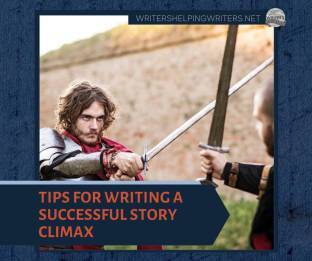
Escalation is an important element of story structure. The opening pages are often quiet as key players are introduced, the setting is established, and readers are given a glimpse of what’s wrong in the protagonist’s world. The catalyst then provides a choice, where the hero leaves their ordinary world and steps into a new one. In the next half of the story, they work their way toward the goal that will fulfill them, facing many conflict scenarios that challenge their methods and way of thinking. In those story moments, the stakes get higher, the consequences more drastic, and the clashes more incendiary until everything culminates in a final confrontation that will determine if the hero achieves their goal or not.
This confrontation is the climax of the story. The reader has known from the beginning that this moment would occur; it’s what they’ve been looking forward to, why they’ve stuck with the protagonist for so many pages. A successful climax will help determine how satisfied the reader is with the story, so it’s vital that we get it right.
What Is The Climax, Really?The climax is the final showdown between the hero and their nemesis. The two may have butted heads already���multiple times, possibly���or this might be the long-awaited battle they���ve been working toward. Different structure models position this pillar at various places, but it’s generally agreed that it works best in the last half of Act Three. This allows for the proper build-up to the climax while leaving enough time for events to resolve afterward.
The purpose of the climax is to give the protagonist a final chance to succeed and achieve the story goal. Numerous conflict scenarios have tested the hero���s resolve and abilities so far. They haven���t always succeeded, but as the struggles have gotten bigger and the stakes have grown, they have moved steadily toward their outer (and inner, if they���re working a change arc) goals. And now comes the biggest test of all: the final meet-up with the nemesis. It’s the protagonist���s last chance to prove themselves. If they fail here, they fail for good. As a result, the climax should definitively determine who wins.
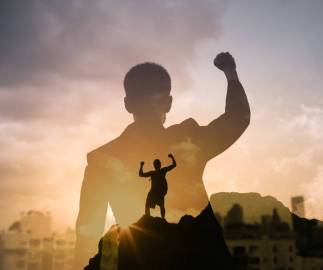
It also allows the hero to display what they���ve learned on their journey. Whether they���ve acquired skills, identified a strength they thought was a weakness, rejected a long-believed lie, or adopted a new mindset, what they���ve learned should tip the scales in their favor during the climax. This is often where the inner and outer journeys merge because the changes they���ve undergone and the lessons they have learned about themselves are exactly what they need to achieve the outer goal. When it’s done artfully, that synchronicity creates a satisfying resolution for readers as the pieces click into place.
Lastly, the climax should mirror the catalyst. As Michael Hauge says in Writing Screenplays That Sell:
���Just as the aftermath contrasts with the setup at the beginning of a screenplay, the climax of the story mirrors the opportunity (catalyst). While the opportunity begins the forward movement of the story���begins the hero’s visible journey by taking him to a new situation���the climax ends that journey by resolving the hero’s outer motivation (story goal).���
In a story with a three-act structure, there’s an invisible hinge at the midpoint that divides the story into two halves. James Scott Bell likens the midpoint to a mirror because the events on one side reflect the other. In this way, the climax relates back to the beginning, closing out the journey that started in your first pages.
What Are The Elements Of A Successful Story Climax?To recap: a successful story climax should tick the following boxes:
It���s the final showdown between the protagonist and the antagonist.It mirrors the catalyst/opportunity. A definitive winner emerges.If the protagonist wins, they do so by using the lessons they learned during their journey.The victor (whomever it may be) achieves their goal.To illustrate how these elements can be used to craft a perfect climax, let���s use Star Wars: A New Hope as an example. In a nutshell, here���s what happens in this important scene:

Luke Skywalker uses his Jedi training to destroy the Death Star, crippling the Empire and sending the enemy packing. Peace and safety are restored to the galaxy.
It���s the final showdown between the protagonist and the antagonist. Luke���s fight to destroy the Death Star is the last confrontation between him and his enemy in this story. It should be noted that the true villain here isn���t a tangible one that Luke can face off against; it���s the empire. But every protagonist needs a physical adversary to battle. That���s provided in the form of Darth Vader, and Luke���s defeat of the empire is also a defeat for him. It���s a good reminder that if your hero is going up against an antagonistic force rather than an actual person, you���ll want to introduce a physical antagonist for them to fight against.
It mirrors the catalyst/opportunity. Luke���s catalyst occurs back on Tatooine, when he���s invited to learn the ways of the Jedi and help the Rebellion defeat the empire. The climax mirrors this as the journey he began culminates in him destroying the Death Star. It���s also a nice touch that the person who offered Luke his catalyst opportunity (Obi-Wan) shows up unexpectedly in the climax to remind his prot��g�� that he must use his Jedi training if he wants to succeed.
A definitive winner emerges. This is made clear in the rout of the empire and the medal ceremony that follows.
If the protagonist wins, they do so by using what they���ve learned. Luke is unsuccessful in destroying the Death Star until he embraces the lessons he learned from Yoda���mainly, his knowledge of and connection with the Force.
The victor (whomever it may be) achieves their goal. Luke���s goal was twofold: learn the ways of the Jedi and defeat the empire. Thanks to Yoda, he has begun his journey to becoming a Jedi and has completed the first part of his objective. With the destruction of the empire, he achieves the second.
A Few CaveatsThe protagonist won���t always win. If you���re writing a tragedy, such as The Boy in the Striped Pyjamas, Into the Wild, or Up in the Air, the hero will fail to defeat their adversary and/or achieve fulfillment and improve themselves.
Maybe they���re unsuccessful because they didn���t learn what they needed to learn, or they weren���t able to fully embrace those lessons during the final confrontation. Sometimes, their internal conflict remains unresolved, and they allow self-doubt, fear, pride, or another habit or hang-up to rule the day. It���s also possible that they achieve their goal only to discover that it was a false goal���one that made things worse or ended up ruining them.
If your protagonist is doomed for failure, element #4 becomes inverted: they don���t succeed precisely because they haven���t gained the knowledge they needed or they failed to utilize it when it mattered. The rest of the key ingredients remain the same, regardless of who wins.
Quiet climaxes can be just as effective. While many thrillers, suspense, and action movies require a gargantuan clash at the end, other kinds of stories don���t necessarily need this. The climax of Pride and Prejudice, for example, happens with Lizzy and Mr. Darcy going for a simple walk. They don’t even argue at this point. Instead, they admit their past failings, express their love for each other, and decide to get married.
It’s a quiet climax that still achieves its purpose. It is their final confrontation as antagonists and happens at the right point in the third act. Lizzy’s recognition of pride as her fatal flaw allows her to overcome it and find true happiness with Mr. Darcy. And her choosing him for a husband reflects the catalyst (her determination when she first met him to have nothing to do with him).
This is something to keep in mind if you���re writing the kind of story that calls for a low-key resolution. A quiet climax can work as long as it does what it���s supposed to do.
As you can see, the climax is important, both for your characters and readers. And the necessary elements for this moment can be applied to all kinds of stories, giving you a blueprint for success when writing this vital scene.
The post Tips for Writing a Successful Story Climax appeared first on WRITERS HELPING WRITERS��.
October 31, 2023
Halloween for Adults: $2.99 Thesaurus Writing Guides

Halloween is here!
We’re sure you have the candy thing under control, so we wanted to let you know that today & tomorrow, you can also stuff your digital bookshelf with some writerly deals!
(Affiliate links – thanks for keeping our lights on around here)
For two days only, you can grab these
bestselling writing guides for $2.99 US:
The Rural Setting Thesaurus: A Writer’s Guide to Personal and Natural Spaces (Yellow)
Find it at Amazon
Buy a PDF direct from our Bookstore
The Emotional Wound Thesaurus: A Writer’s Guide to Psychological Trauma (Red)
Find it at Amazon
Buy a PDF direct from our Bookstore
The Urban Setting Thesaurus: A Writer’s Guide to City Spaces (Orange)
Find it at Amazon
Buy a PDF direct from our Bookstore
The Occupation Thesaurus: A Writer’s Guide to Jobs, Vocations, and Careers (Sea Foam Green)
Find it at Amazon
Buy a PDF direct from our Bookstore
These guides have helped hundreds of thousands of writers all over the world, and we hope they’ll help you, too. You can find them on sale today and November 1st across all Amazon locations, and here at our Writers Helping Writers Bookstore.
Click the book cover to find out more about each guide:
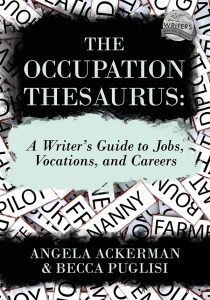
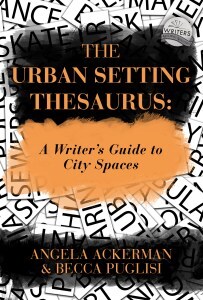
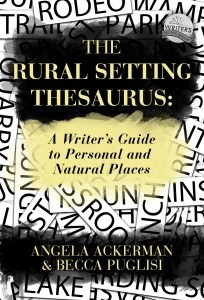
See a volume you don’t yet have? Add it to your collection for $2.99, and Happy Halloween!
Ends Nov 1st, 2023
The post Halloween for Adults: $2.99 Thesaurus Writing Guides appeared first on WRITERS HELPING WRITERS��.
October 27, 2023
NaNoWriMo: Top Tips for Smashing Out 50K
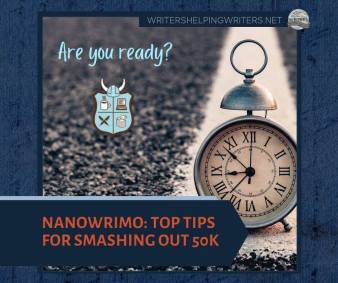
The iconic NaNoWriMo (National Novel Writing Month) challenge has many of you rolling up your sleeves to pound out a novel. Becca and I love this event because it is a great time to become explore deep level ideas, experiment, and show ourselves we are absolutely capable of putting a novel-length story on the page.
NaNoWriMo is something you should make your own. Want to try a new genre? Go for it. Are you a plotter who would like to try pantsing (or the opposite)? Go for it! Maybe you want to channel an alter ego author voice, have an out-of-the box story premise you want to write, or you just need to get that next book done. Whatever it is, NaNo is a great time to blast out words and have fun doing it.
Writing a novel in a month also means telling your inner editor to take a holiday. He or she can go bug Elon Musk for a month – lots to criticize on the X front, after all. November is for you and your creativity alone, a pressure-free time to not worry about getting every word right as you draft.
We want this to be a terrific experience for everyone, so we’ve put together tips to help you smash out the words during NaNoWriMo:
1) Set yourself up for success before you write.This is such an important step no matter what time of year it is, we’ve written an entire post about this! But there’s added pressure when it comes to NaNoWriMo because you’re attempting a draft a novel in a single month. If you haven’t yet done so, set up your space so you have what you need, talk to family members on how to respect your writing time, and click the link above to put yourself in a great place to draft.
2) Find an accountability partner.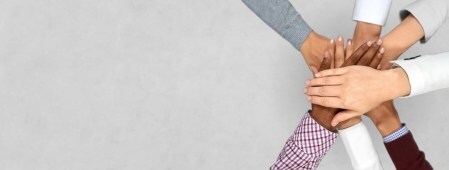
NaNoWriMo is easier (and more fun) with friends, so find other writers who will be taking the challenge. Stay in touch so you can cheer each other on, have someone to turn to when you need help, and even meet up for writing sprints (in the real world, through Zoom, or over social media). NaNoWriMo makes this super easy–you can set up a group, join a group, find locals in your area who are doing the challenge, etc. If you belong to a writer’s organization, see who is taking the challenge and set up a group for you. If you participate on a writing forum, Facebook group, or something else, see who is doing NaNo and suggest you all exchange info to stay connected. Stay in touch, share your progress, support each other so everyone finishes November on a high note!
3) Know enough about your story to feel comfortable writing it.This may look different for everyone, depending on your planning preferences, but planning a bit is essential. Whatever makes you comfortable, do. If you like to full-out outline and do character profiles, do! If you only need a few ideas to run with, great. But know what you need to be comfortable to start and keep writing. It can also be helpful to know your first scene well, so you have a strong first writing session. Highly recommended: the Storyteller’s Roadmap, and downloading the Story Planning Checklist. (Then, after planning, move on to the Writing Track of the Roadmap. You’ll find the Code Red section invaluable.)
4) End each session with an incomplete sentence.This one sounds strange, but starting a new line with that damned blinking cursor can be paralyzing for some. If you know what the sentence is in full, but you leave it half-finished when you stop for the day, you immediately have something to write the next time you sit down, and muscle memory takes over. It can also be good to think on the next scene you want to write in between sessions so you have an easier time picking up again.
5) Keep sources of inspiration on speed dial.There may be times you hit a lull and need ideas. (Totally okay, this happens.) Taking a bit of a break instead of trying to force words might help, so know what tends to make you feel creative and excited to write. Would you like to doodle a bit as you listen to music? Re-watch an old favorite Netflix movie that always leaves you with a rush to create? Bake something, or go for a walk? Maybe for you, inspiration hits in the shower. Whatever activity will help you work through story problems and recharge your creativity, give that a try.
6) If you don’t know what to write next, skip ahead.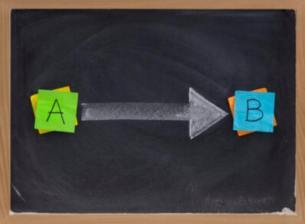
Sometimes we hit a wall and feel pressure because the next scene is a big blank. We don’t know how the protagonist is going to get the magic dagger from their enemy, or what circumstances will ensure our romantic couple end up at the same ski resort. Guess what? It’s okay. Just think ahead to when that story problem is solved: the protagonist has the dagger. The couple run into each other at a ski lesson. Whatever “next scene” you can see clearly in your mind, start writing that scene.
Leave a note before you start reminding yourself what is missing or . Your brain will work on the skipped portion of the story in the background, and let you know how a leads to b. When it happens, you can go back and fill in the blanks.
7) Don’t be afraid to go off script.A challenge like NaNoWriMo is meant to free your imagination, so even if you tend to plot and write to an outline, if your characters are taking things in a different direction, or your gut is telling you to deviate from the plan, you might want to give the story room to change. Add a mark you can find again using search like <<>> to note where you are deviating from the plan. Let the story unfold, and see where it goes. There is no wasted effort here, and you may find the new direction has you excited to write forward. Or you might decide the tangent isn’t for you. No worries! Add another <<>> and restart the story from where you deviated. The words still count toward the total and you can delete them later in revisions.
8) Don’t let doubt creep in.It’s not easy to turn off the part of our mind that worries about quality, and sometimes our Internal Editor shows up despite our efforts to banish him. If he starts tsking over what you’re writing, do not listen. Every first draft is clay we must begin to shape if it is to evolve into the beautiful story we know it can become.
So, if the Internal Editor shows up, banish him to a room where this guy is waiting:

Imagine the resulting screams, smile, and keep writing.
9) Reward yourself.Writing so many words while managing everything else in your life isn’t easy, and will require sacrifice. So make sure to reward yourself along the way, not just at the end of the challenge. Think about small things you love that you can promise yourself at certain points. You could set milestones to your word count, but maybe for you, writing 5 days in a row is a victory, or sticking to an internal promise of starting and finishing that rough chapter is the goal. Reward yourself in ways that motivate you to keep going.
10) Remember, you can’t really “fail” NaNoWriMo.
Even if you don’t hit 50K, or you decide to quit at a certain point because something comes up or you aren’t feeling the story, you had the courage to start, and to try! That’s a win, as is every word you did write!
No effort is ever a waste. Taking on this challenge is also a way to learn more about yourself and what does and doesn’t work for you. These are all lessons that will help you moving forward.
Becca and I are cheering you on! If you need any help at all, check out these three links
The Ultimate Prep Guide for NaNoWriMo (Plotters & Pantsers)
The Novelist’s Triage Center (Get Unstuck & Finish Your Book)
The Writer’s Secret Weapon Page
Go forth and be awesome–you’ve got this!
The post NaNoWriMo: Top Tips for Smashing Out 50K appeared first on WRITERS HELPING WRITERS��.
October 26, 2023
How to Create a Fun Freebie Your Newsletter Subscribers Can���t Resist

You need to build your email list. Everyone says so.
It���s the best way to grow a loyal readership. Simply lure people to your website and then encourage them to sign up for your enewsletter.
So you���ve got your website and you���ve got your newsletter sign-up, but not much is happening. Maybe you get a subscriber now and then, but your list isn���t growing nearly as much as you���d like it to.
How do you get more people on board?
One of the best ways is to give away a freebie in exchange for an email address. Unfortunately, a lot of authors get this part wrong. Here���s why and how you can avoid making the same mistake.
Why Authors Need to Offer FreebiesToday, more of us are trying to cut back on the number of newsletters we receive each week. They take up our valuable time, so we���re being choosier about which ones we sign up for.

That means that you, as an author, have to work harder to overcome your reader���s resistance.
Offering a freebie can help, but it needs to be the right one. Too often, authors feel they should offer an example of their writing, like a short story, missing chapter, or free book.
This is great if the person who���s coming to your website already knows you and your work. Or if you write nonfiction and the short piece you���re offering helps your reader improve her life in some way.
But if you write fiction and you want to capture readers who don���t know you yet, often a free bit of storytelling isn���t going to help much.
That���s because the reader doesn���t yet know you or your writing. They don���t know if they would like your short story, book of poems, or novella. So it���s far too easy for them to pass by the sign-up form.
It���s much better to get creative and think up something that would be more attractive to your reader.
5 Steps to Offering an Irresistible Freebie1. Take an attitude of experimentation.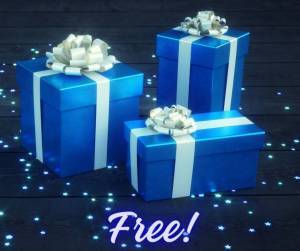
No writer is going to know straight out of the gate the type of freebie their readers will best respond to. This is marketing we���re talking about, and it���s not an exact science. Plus, every author���s audience is different, so you have to find out what works for your readers.
That���s going to take some time and experimentation. Understand that your first try is probably not going to be your last one. You���ll want to test at least three different freebies and then compare how they perform.
2. Consider your reader���s point of view.As you���re coming up with ideas for your freebies, the most important thing to keep in mind is that they need to be valuable from your reader���s point of view.
Yes, your short story is valuable to you and you hope it will be to your readers. But they���re not going to see that value if they haven���t read any of your work before. You need to entice them with something they believe will be valuable to them the second they see it.
Make sure that each freebie idea has the following characteristics:
It gives readers something they want, even if they don���t know youIt���s appealing to your reader right away (i.e., write a great headline!)It offers enough value to your reader that they���re okay with giving up their email addressIt connects to your writing somehowThis doesn���t mean you can���t include a short story, chapter, novella, or other similar option along with your main freebie. That’s often a good idea. Nothing is saying that your freebie can’t include more than one item.
Just make sure that your main item is attractive on its own.
3. Create your first three freebies.Once you���ve got your three ideas, it���s time to write, design, and prepare them for downloading.
���But I don���t know what to create!��� so many writers say.
Here are some ideas off the top of my head to get you thinking:
For Romance Writers
Report: Relationship Tips for MomsList: Most Romantic Date Ideas for Couples on a BudgetQuiz: Which Celebrity Would Be Your Best Match?For Mystery Writers
Instructions: How to Organize Your Own Murder Mystery PartyReport: The Most Common Mystery Clues and What They MeanQuiz: Name that Mystery Author!For Fantasy Writers
Quiz: What Would be Your Best Fantasy Pet? (dragon, unicorn, troll, etc.)List: 5 Real-life Fantastical Locations Perfect for Your Next VacationReport: 5 Fantasy Games You Can Play with the Whole Family4. Advertise It
Once you have your freebie completed and up on your website, it���s time to advertise it. Often writers neglect this step. They���re good at advertising their books, but not their freebies.
The best way to get the word out about this great free offer you have is to share it in:
Social media postsGuest posts (add your offer at the end of the post with a link)Your blogPodcast interviewsEmail signatureAnywhere you can talk about it5. Compare Your NumbersRemember that your first freebie may not be your best one. The only way to tell is to experiment with the other two freebies you created. Run the first one for one month, then the second one for the next month, then the third one for the third month.
Each time, keep track of your new subscribers. Make sure you advertise each freebie equally or your results will not be reliable.
At the end of the three months, go back and see which freebie brought in the most subscribers. Put that one back up (if it���s not up already), and then create three more that are similar. Over time, your readers��� responses will show you what kinds of things they like or don���t like.
This is valuable information for you to have as you grow your list. The more you know what your readers like, the better you���ll get at giving it to them. As you do that, your list will continue to grow, as will your fan base.
It takes time, but it’s worth it. The information you’ll gather is information you can’t get any other way.
Note: Your results hinge on your ability to deliver what you promised in your enewsletter. We���ll talk next time about how to make sure your email lives up to your subscribers��� expectations!
Here���s my newsletter advertisement! Click to get my free report and free chapters of my award-winning books for writers. If you���re interested in affordable, personalized writing coaching, click now and contact me for a free introductory call!
Here are three additional helpful posts from Resident Writing Coach Colleen M. Story. If you have any newsletter, freebie, or blog questions for Colleen, please leave them in the comments.
Three Things Your Author Newsletter Must Do to Please Subscribers
Six Ways to Make Your Author Blog More Successful
5 Reasons Why It���s Still a Good Idea for Writers to Have a Blog
The post How to Create a Fun Freebie Your Newsletter Subscribers Can���t Resist appeared first on WRITERS HELPING WRITERS��.
October 24, 2023
Why ���But��� is a Powerful Writing Tool

Boredom is a common reason why a reader DNFs a book. Genre is irrelevant. If the reader isn���t engaged with the storyline, they will set aside your book for another that will draw them in.
A but means a complication, an obstacle the main character(s) must overcome. If the main character achieves their goals too easily, you���ll rob the reader of anticipation. The journey dies before it begins. Anticipation holds the reader in suspense, forcing them to flip pages late into the night.
Complications and obstacles draw readers in and give them a reason to root for the hero. One way to accomplish this is with but. Real life is filled with obstacles. Let���s look at a few examples.
���Buts��� in the Natural World
A giraffe���s long neck helps them reach leaves at the top of trees, but that same neck causes them to have the highest blood pressure of any animal.
A rhino���s horn is their greatest asset in a fight, but that same horn makes them targets for poachers.
Boreal Owls are usually monogamous, but when prey numbers peak, males cheat with up to three females and female boreal owls often have at least one boyfriend on the side. So much for monogamy, right?
Gray whales can submerge for fifteen minutes at a time, but a mother���s calf can only hold their breath for five minutes. When under attack by Orca, the mother flips on her back to create a platform for her baby, but Momma can���t breathe upside down.
The Rhythm of ���Buts���In the following example, I���ve tried not to infuse emotion, characterization, and visceral elements to keep the focus on but. Obviously, we need more than but to write a gripping scene. Okie doke. Here we go���
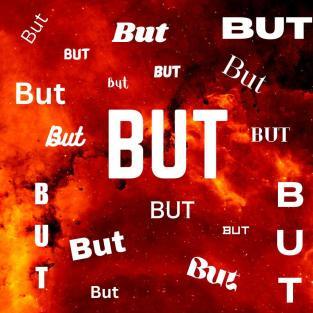
Sarah���s car peters out of gas on a lonely back road with little, if any, traffic. She does have AAA but forgot her phone at home. So, she begins the long trek to the gas station. About a half-mile away from her car, an approaching vehicle���s headlights spiral through her legs. Hope soars like eagle wings but is quickly dashed by the recent news reports of missing women.
Should she accept the ride? If she does, she risks her life, but if she doesn���t, she���ll need to hike another four miles in the dark.
Sarah plays it safe, but lightning cracks open the sky thirty seconds after the good Samaritan leaves. Her father taught her a shortcut, but the trail slices through the dark forest. If she chooses that path, she���ll be alone���isolated���with predators stalking the shadows.
Sarah weighs the pros and cons, but she���s tired and hungry. The shortcut shaves off two miles. Every minute matters. Long delays might tempt Bella to pee on her new rug. Wouldn���t be the first time, but the fibers could only absorb so much puppy urine and cleanser before the color fades.
In the woods, tree canopies umbrella the rain, but they also block the last few trickles of moonlight. Regardless, she continues, but hiking through rough terrain in sandals isn���t easy. Soon, a growl stops her cold, but the rain muffles soundwaves. Animal voices pinball through the trees, but she can���t pinpoint their origin. She quickens her pace, but the toe of her sandal catches on an exposed root, and she falls. She crawls back to her feet, but pain spreads through her ankle.
***
Now, if we leave all the but words, the narrative will become monotonous fast. It���s fine to keep them while learning the rhythm of cause and effect. Just be sure to rewrite during edits without sacrificing the complications and obstacles. By doing so, it���ll force you to vary sentence structure as well, which also improves the manuscript.
How To Rewrite ���But��� ConstructionLet���s use the same example.
On a lonely back road with little, if any, traffic, Sarah���s car peters out of gas. If she grabbed her phone off her kitchen table before she left, she could call AAA. The costly membership won���t benefit her now.
About a half-mile into the long trek to the gas station, an approaching vehicle���s headlights spiral through her legs. Hope soars like eagle wings, then crashes. The recent news reports of missing women squash the idea of climbing into a car with a stranger.
Should she accept the ride? If she does, she risks her life. If she doesn���t, she���ll need to hike another four miles in the dark.
Playing it safe, Sarah declines the offer. Not thirty seconds after the good Samaritan leaves, lightning cracks open the sky. Her father taught her a shortcut, but the trail slices through the dark forest. If she chooses that path, she���ll be alone���isolated���with predators stalking the shadows.
When she weighs the pros and cons, hunger and exhaustion win. Dad���s shortcut shaves off two miles. Every minute matters. Long delays might tempt Bella to pee on her new rug. Again. The fibers could only absorb so much puppy urine and cleanser before the color fades.
In the woods, tree canopies umbrella the rain, but they also block the last few trickles of moonlight. Regardless, she continues. Hiking through rough terrain in sandals isn���t easy. This shortcut better work.
Soon, a growl stops her cold. With the rain muffling soundwaves, could she trust her ears? Multiple animal voices pinball through the trees, but she can���t pinpoint their origin. She quickens her pace. Three hard-earned strides later, the toe of her sandal catches on an expose root, and she sails through the air, landing face-down in mud and muck.
When she crawls back to her feet, pain spreads through her ankle.
Uh-oh. Now what?
The first example has thirteen buts. The rewrite has three while still maintaining the cause-and-effect rhythm aka motivation-reaction units or MRUs. The power of but forces us to create complications and obstacles. So, the next time you struggle with a boring scene, add a few buts. You may be surprised by how much your scene improves.
Do you keep but in mind while writing?The post Why ���But��� is a Powerful Writing Tool appeared first on WRITERS HELPING WRITERS��.
October 21, 2023
Character Type & Trope Thesaurus: Bossy Britches
In 1959, Carl Jung first popularized the idea of archetypes���”universal images that have existed since the remotest times.” He posited that every person is a blend of these 12 basic personalities. Ever since then, authors have been applying this idea to fictional characters, combining the different archetypes to come up with interesting new versions. The result is a sizable pool of character tropes that we see from one story to another.
Archetypes and tropes are popular storytelling elements because of their familiarity. Upon seeing them, readers know immediately who they’re dealing with and what role the nerd, dark lord, femme fatale, or monster hunter will play. As authors, we need to recognize the commonalities for each trope so we can write them in a recognizable way and create a rudimentary sketch for any character we want to create.
But when it comes to characters, no one wants just a sketch; we want a vibrant and striking cast full of color, depth, and contrast. Diving deeper into character creation is especially important when starting with tropes because the blessing of their familiarity is also a curse; without differentiation, the characters begin to look the same from story to story.
But no more. The Character Type and Trope Thesaurus allows you to outline the foundational elements of each trope while also exploring how to individualize them. In this way, you’ll be able to use historically tried-and-true character types to create a cast for your story that is anything but traditional.

DESCRIPTION: This take-charge character is a born (micro) manager who has strong opinions and no problem telling people what to do.
FICTIONAL EXAMPLES: Hermione Granger (the Harry Potter series), Harriet M. Welsch (Harriet, the Spy), Lucy (Peanuts), Regina George (Mean Girls), Sheldon Cooper (The Big Bang Theory)
COMMON STRENGTHS: Ambitious, Bold, Confident, Decisive, Disciplined, Efficient, Focused, Independent, Industrious, Intelligent, Meticulous, Organized, Passionate, Persistent, Persuasive, Responsible, Sensible, Studious
COMMON WEAKNESSES: Abrasive, Cocky, Controlling, Haughty, Humorless, Inflexible, Judgmental, Know-It-All, Manipulative, Nagging, Obsessive, Perfectionist, Pushy, Tactless, Workaholic
ASSOCIATED ACTIONS, BEHAVIORS, AND TENDENCIES
Being unafraid to stand up for themselves
Enjoying being in charge
Being on time (or early) for everything
Having a knack for getting things done
Is highly competent
Having good leadership qualities
Is often well-liked by teachers, bosses, and other authority figures
Micromanaging others
Being annoyed by inefficiency and incompetence
Not knowing how to have fun
Using a tough exterior to mask insecurity
SITUATIONS THAT WILL CHALLENGE THEM
Having to work with someone who’s lazy or incompetent
Being replaced as a leader
Having a child who sees the world and operates differently than the character
Having to learn a skill or hobby they’re not good at
TWIST THIS TROPE WITH A CHARACTER WHO���
Has high empathy for others
Has a strong group of friends
Knows how to compromise
Has an atypical trait: humble, mischievous, nurturing, philosophical, etc.
CLICH��S TO BE AWARE OF
A bossy character who is domineering 100% of the time, in every situation
The Hermione Granger schoolgirl version of a bossy britches
Other Type and Trope Thesaurus entries can be found here.
 Need More Descriptive Help?
Need More Descriptive Help?While this thesaurus is still being developed, the rest of our descriptive collection (16 unique thesauri and growing) is accessible through the One Stop for Writers THESAURUS database.
If you like, swing by and check out the video walkthrough for this site, and then give our Free Trial a spin.
The post Character Type & Trope Thesaurus: Bossy Britches appeared first on WRITERS HELPING WRITERS��.
October 18, 2023
Phenomenal First Pages Contest – Guest Editor Book Blurb Edition
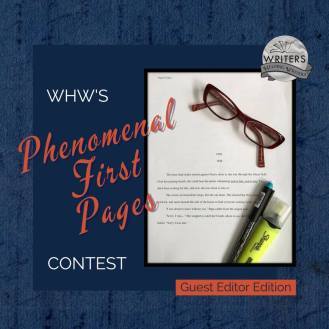 Hey, wonderful writerly people! It���s time for our monthly critique contest. This month, we have a unique contest.
Hey, wonderful writerly people! It���s time for our monthly critique contest. This month, we have a unique contest. 10 winners will receive feedback on their book blurb from a professional editor!
Here’s a post with helpful tips for crafting a blurb…which is the copy on the back cover of a book or the sales webpage, explaining what the book is about. It’s usually two to three paragraphs in length.
Winners may send the kind of back cover book blurb described in the post linked above…or you may share the book blurb you’d like to include in a query or cover letter to an agent or editor. If you’re a winner and intend the blurb to be inside a query or cover letter, please let Erica know.
PLEASE NOTE: We’ve recently changed our process for entering this contest.
If you’d like a chance to win feedback, use this link or click the graphic below to reach our ENTRY FORM:
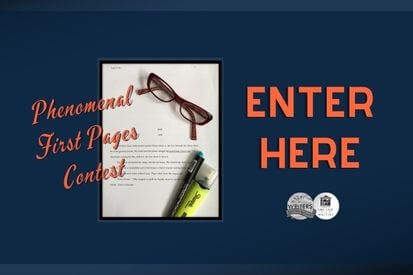 ENTRY FORM
ENTRY FORMWhen you enter by form, double check that your email is correct so I’ll be able to contact you if I draw your name. (If I can’t reach you, you’ll have to forfeit your win.)
The editor you’ll be working with:Erica Converso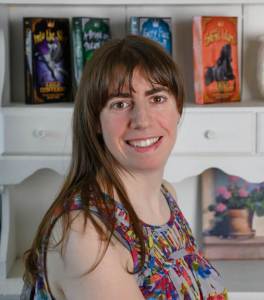
I���m Erica Converso, author of the Five Stones Pentalogy (affiliate link). I love chocolate, animals, anime, musicals, and lots and lots of books ��� though not necessarily in that order. In addition to my work as an author, I have been an intern at Marvel Comics, a college essay tutor, and a database and emerging technologies librarian. Between helping adult patrons in the reference section and mentoring teens in the evening reading programs, I was also the resident research expert for anyone requiring more in-depth information for a project.
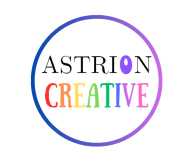
As an editor, I aim to improve and polish your work to a professional level, while also teaching you to hone your craft and learn from previous mistakes. With every piece I edit, I see the author as both client and student. I believe that every manuscript presents an opportunity to grow as a writer, and a good editor should teach you about your strengths and weaknesses so that you can return to your writing more confident in your skills. Visit my website astrioncreative.com for more information on my books and editing and coaching services.
Contest GuidelinesComments will NOT enter you in this contest. To enter, fill out this contest form. (One entry per person.)Have your blurb ready to go. This contest only runs for 24 hours, so enter by form ASAP.We use Random.org to draw winners, and will post the names in the comments tomorrow morning. If you win, I’ll be in touch!
If you���d like to be notified about our monthly Phenomenal First Pages contest, consider subscribing to our blog (see the right-hand sidebar).
A huge thank you to Erica, and good luck to all! I can’t wait to see who the winners will be. 
PS: Here’s a blog post with tips for writing a top notch blurb by Erica Converso.
Here���s an incredible worksheet that will help you build an eye-catching blurb! Ready Chapter 1 is celebrating the launch of their free Peer Critique forum and shared this to prepare people for their blurb contests (where you can win agent feedback). They generously allowed me to share this resource with you.
The post Phenomenal First Pages Contest – Guest Editor Book Blurb Edition appeared first on WRITERS HELPING WRITERS��.
October 17, 2023
Three Ways to Make Readers Care About Secondary Characters

A common mistake I see in client manuscripts is a cast of secondary characters that simply exist to help or to outright block the protagonist. They���re either ready, willing, and able to drop everything to help that protagonist reach their own goal. Or they���re a character who is out to make the protagonist���s life hard for no logical reason.
Let���s face it. That���s not how real life works, as everyone has wants and needs of their own. Fictional secondary characters are no different. Their relationship with your protagonist should work like sandpaper, revealing internal growth your protagonist needs, or revealing their commitment to reaching their external goal. If we craft our secondary characters well, they should create a tug-of-war inside the reader. Readers should empathize with each secondary character���s inner motivation and struggle with who to primarily cheer for. This applies to antagonists every bit as much as it does to an ally. Conjuring empathy for each and every secondary character makes those characters more engaging, and it forces you as the writer to create the most compelling protagonist possible. Your protagonist���s desire to reach a particular goal fueled by unmet inner need will have to work that much harder to earn that top spot in reader���s hearts because you���ll have crafted compelling contenders, vying for that spot.
Let���s talk about three ways to achieve this���
They Must Have Their Own Inner Desire/External Goal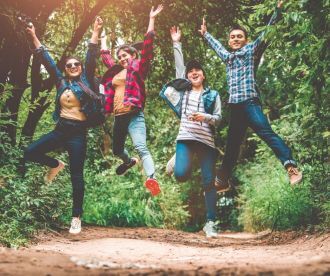
It helps to look at any given scene from the perspective of every secondary character you���ve included. If those characters are only on the page to help your protagonist achieve/block their goal, then it���s a missed opportunity. Secondary characters should consistently add tension to scenes���tension that grows your protagonist internally or externally. It���s far more interesting when we get a sense for what other characters want in a scene because we can gauge how that may help or harm what the protagonist wants.
Even if your secondary character is supporting your protagonist and aiming to reach the same external goal, their inner motivation shouldn���t be the same as any other character. What���s motivating each of your secondary characters? Does their motivation conjure empathy in the reader, even if we don���t support that end or we still cheer for the protagonist more? What���s the logic or backstory behind that secondary character���s motivation? Does your protagonist wrestle with the way even an antagonist presents logical motivation to them? Does your protagonist struggle seeing what their allies are giving up in order to support the protagonist���s end?
Tip: A secondary character cannot help or rescue your character without your character losing something they value.
The Secondary Character Must Challenge Your Protagonist in Some External And/Or Internal Way
If your secondary character is an ally or a romantic interest of your protagonist, we might not expect that they���re working like an antagonist, trying to thwart the protagonist���s success. Still, even allies and love interests should be working to grow the protagonist.
*Is that secondary character working like a mirror the protagonist doesn���t want to see themselves in?
*Are they asking hard questions about the protagonist���s hidden fears or motivations?
*Is the secondary character someone the protagonist wants to be like but they���re not ready or unable to accept that they���re never going to be that way?
*Are they asking more from your protagonist than the protagonist is ready to give?
*What does retaining that ally or love interest cost your protagonist?
*How does having that character���s help or support complicate things?
*Are they forcing your protagonist to look at backstory events from a different perspective?
*Forcing the protagonist to empathize with the motivation of any given antagonist?
Tip: The answers to these questions should not be the same for any two secondary characters. Each secondary character must challenge the protagonist differently in order to earn their keep.
Their Dialogue Can���t Solely Exist to Teach Your Character (And Reader) About The Story WorldWe���ve all heard it. Secondary characters saying things like, ���As you know,��� or sitting your character down to hand them the handbook on your story world. As much as possible, the dialogue and even the actions of your secondary characters should convey intent and a hint of their own inner world. The problem with dialogue that carries worldbuilding or stark plot-based information is that it oftentimes fails to reveal more to us about your protagonist or that secondary character. Worse yet, it leaves almost no room for the protagonist to respond with dialogue that conveys their own intent or emotion. Unless your protagonist has approached a secondary character with a very specific question that requires an answer containing information, try to think of secondary character dialogue as an opportunity to reveal their intent and emotion as much as possible. To challenge your protagonist.
Tip: Study every line of dialogue to see if you can attach an emotional ���label��� to it. You should be able to read the line and sense some primary emotional current running through the content. Anger, avoidance, relief, elation, etc. Emotions that are almost always red flags for weak dialogue are characters expressing awe or curiosity. Lines like, ���Wow!��� or, ���What is that?��� Those types of lines simply exist to set the other character up to talk at the other character/us more. If the line of dialogue doesn���t leave space for a response of some sort, then you know it���s not reaching its potential for adding tension.
What aspects of secondary character creation do you struggle with most? Do you find secondary characters easier to craft since the pressure isn���t as direct as it may be in crafting the protagonist? When you develop secondary characters, how do you bring them to life effectively?Happy writing!The post Three Ways to Make Readers Care About Secondary Characters appeared first on WRITERS HELPING WRITERS��.
Writers Helping Writers
- Angela Ackerman's profile
- 1022 followers



